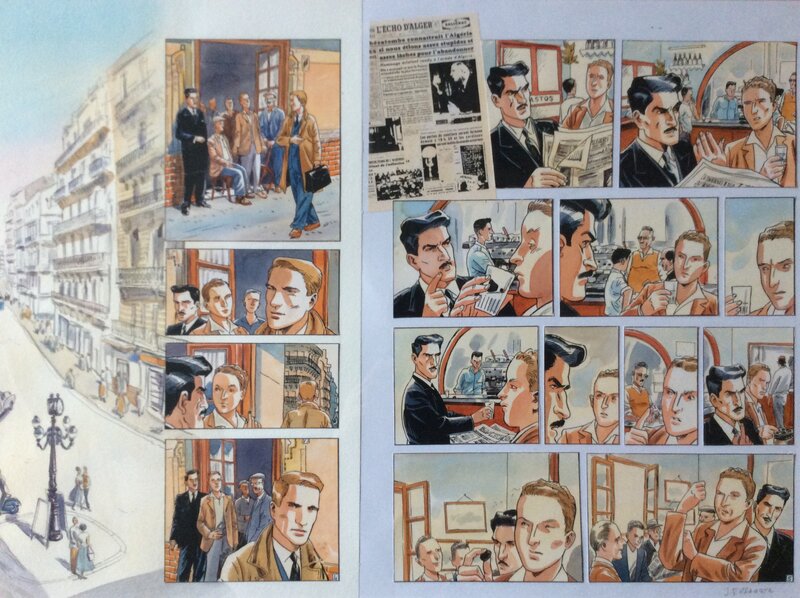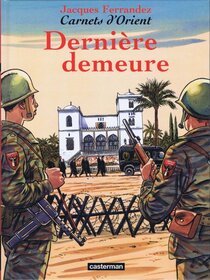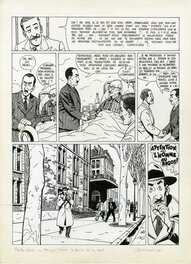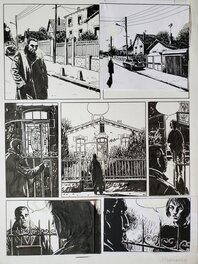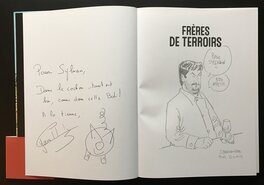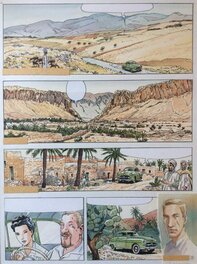In Charlyd77 's collection
Alger - Bab El Oued - Carnets d'orient
Watercolor
44 x 65 cm (17.32 x 25.59 in.)
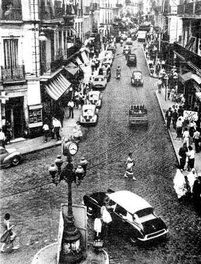
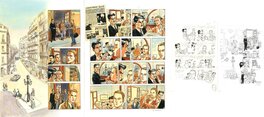
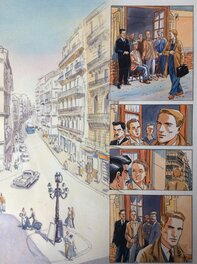
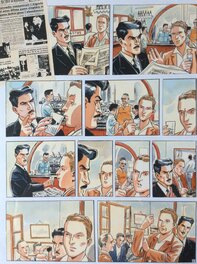
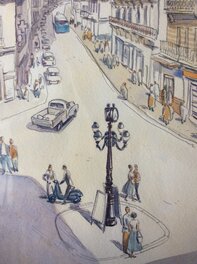
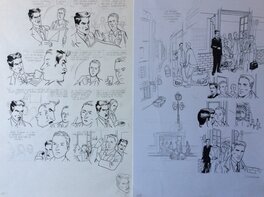
Inscriptions
Signée Ferrandez
Comment
Dernière demeure T9
Planches 4 et 5
Belle vue de la place des Trois Horloges, en plein coeur de Bab El Oued, le quartier populaire d'Alger à toutes les époques.
Planches 4 et 5
Belle vue de la place des Trois Horloges, en plein coeur de Bab El Oued, le quartier populaire d'Alger à toutes les époques.
Publications
Thematics
To leave a comment on that piece, please log in
About Jacques Ferrandez
Jacques Ferrandez was born in Alger, Algeria, but he and his family settled in Nice, France, when he was only a couple of months old. After a six year education at the National School of Decorative Arts, he embarked on a career in comics, starting with the story 'L'Homme au Bigos' in 1977. This comic, written by Rodolphe and prepublished in Télérama, introduced the character of 'Commissaire Raffini', whose further adventures appeared in four albums at Les Humanoïdes Associés between 1980 and 1988.
Ferrandez and Rodolphe additionally cooperated on a series of short stories for À Suivre, as well as 'Anne et Charles' in Circus (1982-85), and some works for Métal Hurlant and Pilote. Stories by Ferrandez and Rodolphe were collected in books like 'Outsiders' (Les Humanoïdes Associés (1985) and 'Le Vicomte' (Dargaud, 1986). Also for À Suivre, Ferrandez wrote and drew 'Arrière-Pays', a series of short and more intimate stories.
After a change of style in 1986, he began realizing his old dream: to tell a moving epic about his homeland, Algeria, and its fight for independence. Over the years, he produced a series of seven books, which depicted Algeria's modern history with sophistication in tasteful watercolors. This collection, called 'Carnets d'Orient', was prepublished in magazines like Corto and À Suivre.
Text (c) Lambiek

